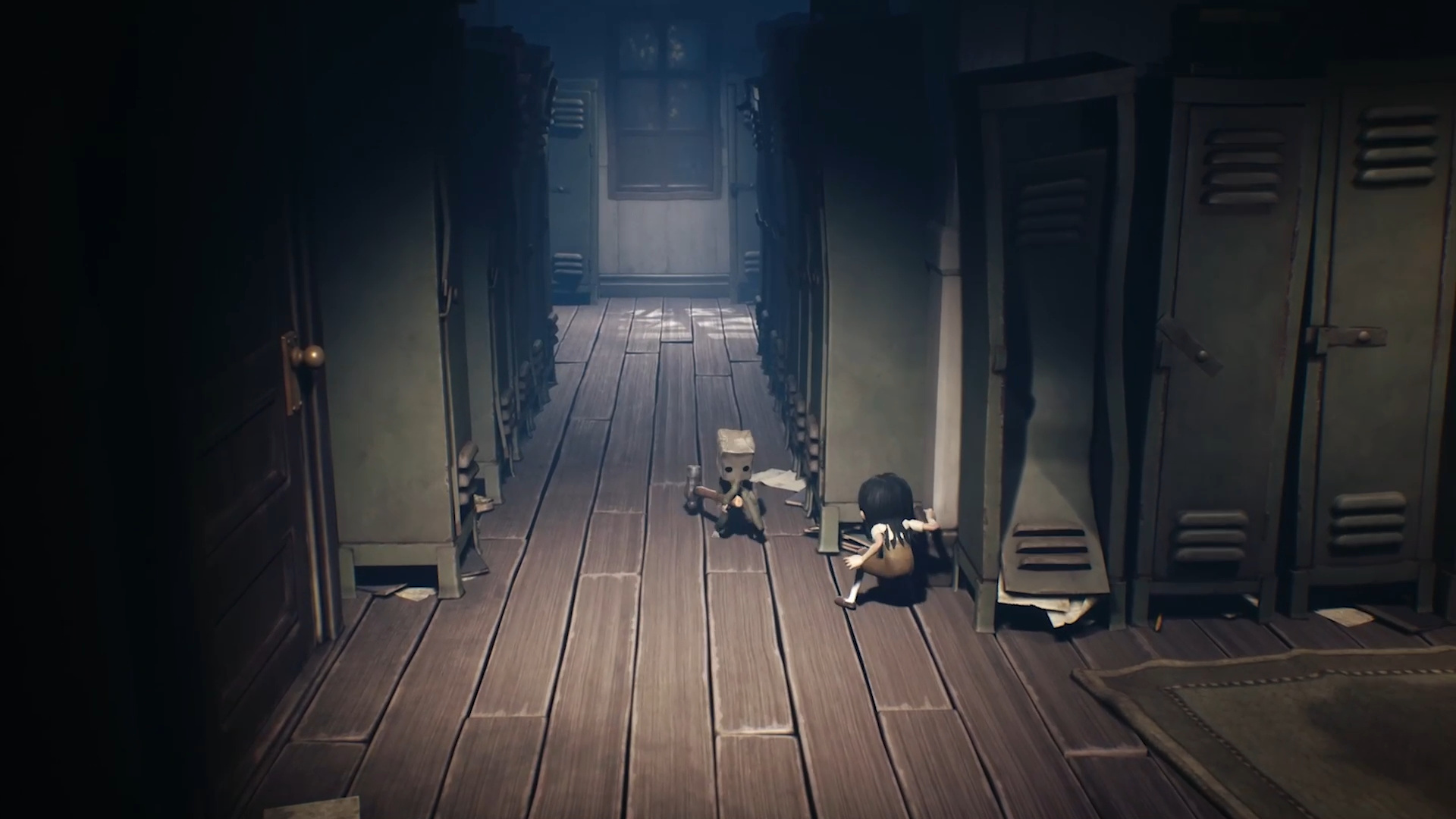The Echoes of Control: Unraveling Media Manipulation in Little Nightmares II
In the haunting realm of Little Nightmares II, The Pale City emerges as a crumbling testament to a society ensnared by the tentacles of media domination. Unlike the confined and suffocating tyranny of The Maw in the original game, this sequel ventures outward, both in terms of physical space and thematic depth, to delve into the art of reality distortion through screens, signals, and the insidious grip of psychological dependency. At the very core of this nightmarish landscape stands the enigmatic Transmission Tower, a colossal structure that emits far more than mere electromagnetic waves; it projects a potent cocktail of submission, distraction, and blind obedience.
This in - depth analysis will plunge into the rich symbolism of media manipulation woven throughout Little Nightmares II. We'll explore how every warped television screen, every flickering and disorienting image, and every persistent hum of static contribute to the game's chilling depiction of control through the lens of perception. Organized into ten sequential sections, this exploration will trace Mono's journey from his initial brush with televisions to the final, mind - bending revelation within the Tower, dissecting how the environment, adversaries, and narrative converge to illustrate the slow erosion of individual will under the weight of mass influence.

The Prelude of Static: The Transmission's Faint Murmur
From the very first frame, Little Nightmares II employs static as a cryptic language. Mono stirs to consciousness in a forest where the electronic hum is as palpable as the damp earth beneath his feet—a place where nature and technology have already begun an uneasy dance. The faint television noise reverberates through the trees, setting a foreboding tone for a world infected by invisible frequencies.
The forest serves as the game's psychological primer. It isolates the player, creating a sense of vulnerability before plunging them into the maelstrom of media distortion. The scattered televisions here are not yet active instruments of control but rather the skeletal remains of a civilization once addicted to the flickering images on their screens, now consumed by the aftermath of their own obsession.
The moment Mono reaches out and touches a TV, getting drawn into its glowing embrace, marks the birth of a profound connection. His ability to traverse through screens foreshadows the dual - edged nature of media: it can be a gateway to liberation or a snare that leads to enslavement. The static beckons to him like a siren's call, promising enlightenment while silently stealing away his autonomy.
The Hunter's Lair: Domestic Oppression and the Specter of Surveillance
The Hunter's Cabin is the first enclosed environment where the themes of control manifest in a tangible, spatial sense. Its layout is claustrophobic, with walls adorned with mounted trophies, tools of the hunt, and taxidermied creatures. Every surface seems to bear the weight of an unseen gaze, creating an atmosphere of constant surveillance. Even in the absence of overt technological monitoring, this space embodies the concept of being watched at all times.
When Mono and Six stumble upon the television in the basement, it stands as a silent sentinel, a cold, unblinking eye that replaces human interaction. In a world devoid of meaningful dialogue, the TV becomes the sole voice—a symbol of how communication can be monopolized by a single, all - powerful source.
The Hunter's domain is a microcosm of a society that monitors and collects. His obsession with preserving the remains of his kills echoes the way media freezes life into static, consumable fragments. The Cabin thus becomes an early metaphor for the first stage of manipulation: the act of possessing through observation.

The Urban Labyrinth: Plunging into the Broadcast Abyss
Upon breaking free from the forest, Mono and Six find themselves in The Pale City, where the very architecture has been subjugated by the television. Skyscrapers lean precariously under the weight of countless antennas, wires snake through the alleys like malevolent vines, and the sky is bathed in a static haze. Every building is both a home and a receiver, feeding off the unseen frequency emanating from the Tower.
The citizens, now known as Viewers, are the living embodiment of total control. They are not the traditional monsters but rather victims so entranced by the broadcast that they have become mere extensions of it. Their motionless bodies and hollow, expressionless faces are a chilling visualization of passive consumption.
Here, Little Nightmares II shifts from personal horror to a broader societal critique. The city is not just a dystopian backdrop; it reveals the consequences of a world where reality has been replaced by a projected illusion. Each television on the street acts as both a portal to another realm and a mirror, reflecting humanity's growing dependence on its own self - created illusions.
The Schoolhouse: Indoctrination and the Architecture of Conformity
The next chapter of Mono's journey takes him into the School—an environment that epitomizes institutional control. The setting is designed to suppress individuality, with identical desks lined up in neat rows, harsh, unforgiving lighting, and towering walls that seem to close in. The Teacher's grotesquely elongated neck allows her to survey the classroom from every angle, enforcing discipline even when she is not physically present.
The symbolism here is direct yet deeply profound: education has been transformed into indoctrination. The students, who mimic obedience through their grotesque physical deformities, illustrate the long - term effects of a system built on conformity. Their clay - like faces and uniform actions echo the emotional numbness that comes with mass programming.
In this environment, the influence of television is more subtle but no less pervasive. Posters on the walls, the arrangement of the classroom, and even the sound design mimic the rhythmic patterns of control. The School teaches not curiosity and critical thinking but blind obedience, preparing its subjects to become the passive Viewers seen later in the city.
The Hospital Horror: Disembodiment and the Mechanization of the Human Soul
The Hospital marks a descent into a different kind of manipulation—the technological obsession with controlling the human body. Television light flickers across the dimly lit hallways, which are filled with prosthetics, x - rays, and lifeless limbs. Here, screens are not just sources of entertainment but medical tools, symbols of authority and surveillance dressed up as healing.
The Doctor's monstrous mobility—crawling along the ceiling like a spider—represents the inversion of trust. The very institutions designed to protect and heal life have become instruments of domination. Patients are no longer treated as individuals but are modified and molded into silent compliance.
The flickering televisions in this section serve as anesthetics, numbing the awareness of both the characters and the players. They distract, lulling them into a false sense of security before the horror strikes. The Hospital teaches that control is not always overt and violent; it can thrive under the guise of care and protection.

The Signal Tower's Reach: The Invisible Puppet Master
As Mono progresses through The Pale City, the influence of the Transmission Tower becomes increasingly palpable. Static interrupts the very fabric of reality—distorting walls, bending hallways, and altering the laws of gravity. It's as if the city no longer adheres to the rules of physics but instead follows the emotional logic of the signal.
The Tower symbolizes the centralization of power. Its faceless presence looms over the skyline, representing the unseen authority behind all forms of manipulation. The humming resonance that permeates every corner of the city is its heartbeat—a constant reminder that even silence is manufactured.
By the time Mono reaches the outer gates of the Tower, the player has internalized this control. The televisions no longer feel like foreign objects; they have become tools, gateways, and even allies. This psychological conditioning mirrors the real - world dependence on media, where the instruments of control are often mistaken for sources of comfort.
The Thin Man: The Living Embodiment of Transmission
The Thin Man is the game's most direct representation of the Tower's influence. He emerges from televisions like a living broadcast, his every movement stretched and distorted by static. Unlike previous enemies, he doesn't chase blindly; he pursues with a calculated purpose, like a signal honing in on its receiver.
His design encapsulates the essence of depersonalized power: a suit, a hat, and no discernible identity. He is the image of authority stripped of all humanity. The Thin Man represents not a person but the act of broadcasting itself—the endless repetition of control through an endless array of screens.
When Mono confronts and eventually overcomes the Thin Man, it's not just a battle between two figures; it's a collision between the transmitter and the receiver. Yet victory comes at a steep price—Mono inherits the role. The cycle continues, suggesting that those who resist control can easily become its next vessel.
The Tower's Heart: Spatial Chaos as a Symbol of Collapse
The final journey into the Tower blurs all boundaries between reality and transmission. The architecture folds in on itself, creating looping corridors and impossible geometries. This collapse of space mirrors the disintegration of truth in a world consumed by the signal.
The interior aesthetic—liquid walls, floating debris, and pulsating static—evokes a sense of both awe and nausea. It's the visual language of control taken to its extreme, where even perception cannot be trusted. The Tower doesn't just manipulate; it redefines the very nature of existence.
Thematically, this represents the ultimate consequence of media domination: the erasure of the line between the subject and the signal. Mono's gradual absorption into the environment confirms the total victory of manipulation. The final act becomes an allegory for the act of surrendering one's identity to a collective illusion.

The Betrayal and Metamorphosis: Mono as the Next Transmitter
The climactic betrayal by Six is one of the most emotionally charged moments in the series. But it's not just a personal betrayal; it's a thematic one. By letting Mono fall, Six symbolically severs the human connection that could have broken the cycle of control. In isolation, Mono becomes vulnerable to the very force he once resisted.
The transformation sequence that follows, where Mono evolves into the Thin Man, completes the tragic loop. His body stretches, his face disappears, and his humanity is absorbed by the static. The Tower gains a new transmitter, born from despair and loss.
This ending crystallizes the game's central message: control perpetuates itself through trauma and loss. Every act of rebellion feeds the next generation of manipulation. The system doesn't need to destroy its enemies; it only needs to transform them.
The Essence of Control: What Little Nightmares II Reveals About Us
In Little Nightmares II, the Transmission Tower is more than just a plot device; it's a mirror held up our modern age of screens and constant noise. The game's horror stems from a sense of recognition—the realization that its world is not a far - fetched fantasy but a metaphor for our own reality. We too live amidst signals that shape our perception, desires, and even our sense of self.
By using silence, distortion, and surreal architecture, the game captures the emotional texture of living under constant influence. It doesn't preach or moralize; it immerses. Each flickering screen is both a warning and a reflection—a reminder that control in today's world doesn't come from physical chains but from the subtle manipulation of our attention.
Ultimately, the brilliance of Little Nightmares II lies in its quiet yet powerful critique. It shows us that manipulation doesn't shout; it hums softly in the background, comforting and hypnotic. And in that comfort, we risk losing ourselves.
Conclusion
The narrative of Little Nightmares II is not merely a tale of fear; it's a profound exploration of the surrender of the self to systems that are too vast and complex to fully comprehend. Through its haunting depiction of media control, the game creates an atmosphere where screens are both portals to other realms and prisons that confine our minds, where information becomes an addiction, and where the act of watching slowly consumes the watcher.
From Mono's first encounter with the static to his final, tragic metamorphosis, every frame of Little Nightmares II tells a story of perception twisted into obedience. The game poses a chilling question: when reality itself becomes a broadcast, how many of us can truly claim to be awake?






